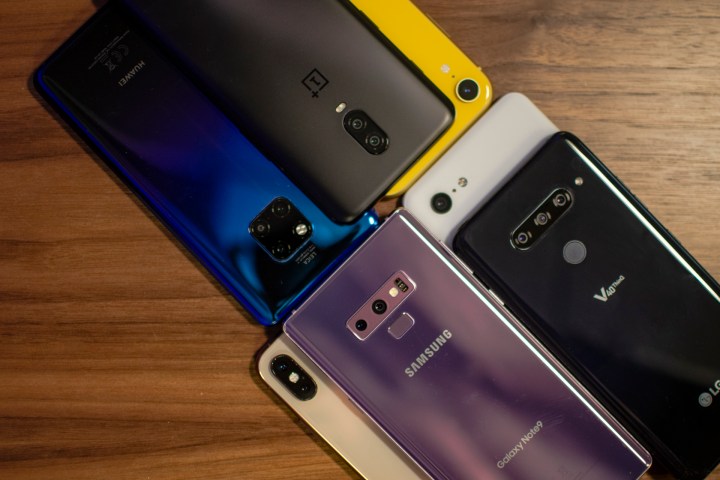
In 2018, smartphone sales numbers stopped growing, according to two data analysis companies, Strategy Analytics and Counterpoint Research. Strategy Analytics executive director Neil Mawston wrote in his guide to the latest figures that it’s the “first time ever in history the global smartphone market has declined on a full year basis. It is a landmark event.”
What does this mean? First, its not like only a dozen phones were sold last year. Manufacturers still managed to shift 376 million devices in the final three months alone, bringing the yearly total to 1.43 billion. No fire sale was needed to keep the big-name companies afloat, in other words. However, this was a five-percent drop over the 1.51 billion sold in 2017, and when you’re talking about billions of phones, a five-percent drop is relatively substantial.
Samsung and Apple sold fewer phones in 2018 than they did in 2017, according to Strategy Analytics figures. Samsung fell from 317.5 million in 2017 to 291.3 million in 2018, while Apple sold 206.3 million in 2018 compared to the 215.8 million it did the year before. This trend wasn’t seen everywhere, and both Huawei and Xiaomi — third and fourth in shipment market share — sold more phones in 2018 than in 2017.
Why, and what will 2019 bring?
Huawei apparently grew by 35 percent in 2018, selling 205.8 million phones, putting it right behind Apple. Strategy Analytics director Woody Oh expects Huawei to overtake Apple at the end of 2019, saying the Chinese brand is “massively outgrowing the iPhone.” Xiaomi went from 91 million phones sold in 2017 to 119 million in 2018; but Strategy Analytics warned that the company may face a hard 2019 due to a large inventory and strong price competition from its rivals.
Why has this happened? Linda Sui, another Strategy Analytics director, says the decline in sales over the past five quarters is to due to economics and price, and “longer replacement rates and a lack of wow models.” Associate Director Tarun Pathak at Counterpoint Research, which puts the global sales drop at 4 percent, says in 2019 we should look out for “devices with innovative designs and specifications such as 5G, foldable displays, punch-hole cameras, and full-screen in-display fingerprint sensors to lure consumers to upgrade.”
The industry’s top trade show, Mobile World Congress, takes place at the end of February, and both 5G and folding smartphones are expected to be big news throughout.
Editors' Recommendations
- Look who just replaced Samsung as king of the global smartphone market
- Nothing founder teases company’s first Android smartphone
- The best fitness workout accessories for your smartphone
- The best fast chargers for your smartphone in 2022
- How much RAM does a smartphone actually need? We asked the experts



